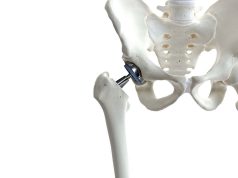Researchers find more success in emphysema tx when stricter criteria used in patient selection
THURSDAY, Dec. 10, 2015 (HealthDay News) — A more careful selection of patients could help improve the success rate of bronchoscopic lung-volume reduction with the use of one-way endobronchial valves in patients with emphysema, according to a study published in the Dec. 10 issue of the New England Journal of Medicine.
The researchers randomly assigned 68 patients with severe emphysema, average age 59, and confirmed absence of collateral ventilation to bronchoscopic endobronchial-valve treatment (EBV group) or to a control group who received continuing standard medical care. The team assessed changes in forced expiratory volume in one second (FEV1), forced vital capacity (FVC), and six-minute walk distance from baseline to six months.
The researchers found greater improvements for those in the EBV group. Seventy-five percent of the patients who got the devices responded to the treatment, study coauthor Dirk-Jan Slebos, M.D., Ph.D., an associate professor with the department of pulmonary diseases at the University of Groningen in the Netherlands, told HealthDay.
“Endobronchial-valve treatment significantly improved pulmonary function and exercise capacity in patients with severe emphysema characterized by an absence of interlobar collateral ventilation,” the authors conclude.
Full Text (subscription or payment may be required)
Copyright © 2015 HealthDay. All rights reserved.








